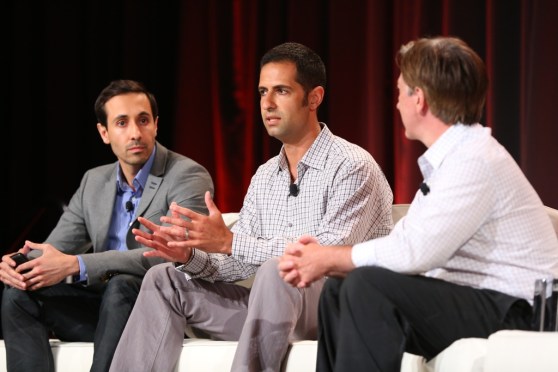Our seventh annual MobileBeat conference is over, but the ideas we discussed live on.
After exploring the intricacies of mobile design and experience at our last two conferences, this year we honed in on mobile growth opportunities. And from those discussions came some truly useful takeaways. [Check out all of our stories from MobileBeat here.]
1. Context is key
If there’s one thing everyone in the mobile industry seems to be thinking about today, it’s context.
Perhaps it’s because an increased focus on context has the potential to benefit many layers of mobile: smarter ads that know what you like and present offers at opportune times; apps that can pick up on our habits and become a part of your daily routine; and retailers who want to serve up deals and simplified checkout opportunities.
This isn’t a new concept. The rise of smartphones begat readily available consumer-location data, and the mobile industry was quick to take advantage of that. But now we’re adding more layers to the contextual cake, including new health sensors and better in-door tracking with Bluetooth beacons like iBeacon.
During a panel about predictive technology at MobileBeat, Tempo AI founder and CEO Raj Singh noted that predictive tech will eventually become yet another mobile layer (likely by mashing together other contextual layers). That’s good news for mobile companies — but it may mean trouble ahead of consumer privacy rights.
2. Don’t just focus on user acquisition: focus on keeping them
While attracting new users to your apps remains important, this year we heard more mobile executives stress the importance of strategies for keeping those users engaged.
“Outside of our industry, installing an app is not a typical marketing end,” Jason Spero, Google’s head of performance media, said during his kickoff panel at MobileBeat. “The marketing end is getting someone to walk into your taco restaurant or getting someone to engage with your product. … Marketers have downstream goals.”
Ultimately, that means developers need to think harder about creating apps that solve genuine problems for consumers as well as employ strategies to keep users coming back. That could mean sending well-placed push notifications (though sending too many is a quick way to get your app uninstalled) or simple things like saving payment data to simplify purchases.
3. Innovative ads are more important than ever
Yes, we’ve been hearing this for years. But now that marketers and devs are becoming more familiar with mobile, and our devices and cellular networks are faster, there’s even more potential to be creative with mobile ads.
For example, Living Social and Applovin discussed their partnership at MobileBeat, which involves Living Social pushing users’ clickstream data to Applovin, which is then used to optimize recommended ads. Most importantly, users are pushed right back into Living Social’s app to complete the purchase when they click the ads.
“Brands who utilize innovating marketing technology … are going to put themselves into position for success over time, they’re going to position themselves to be front-runners in the mobile movement,” Applovin cofounder and CEO Adam Foroughi said during his panel with Living Social product head Mike Bidgoli. “People focusing in desktop [marketing] are going to be left behind.”
4. Ad attribution remains a problem for everyone
Not only do your ads need to be good, you need to be sure you’re properly tracking them to make sure they’re effective. That’s another key element in Applovin’s arsenal, and it’s also something that the marketing automation company Mobile Bridge is also focusing heavily on.
Mobile Bridge, which emerged from stealth this week, says it has developed a custom gelocation technology to better track when consumers enter stores and interact with ads and other pushed media. Its platform can even pull in weather context, and it can tell if a user has been walking or jogging.
5. All of this needs to work together now
You may have noticed that many elements of the above takeaways are somewhat interchangeable. Better understanding of context could be a big help with ads, attribution, and retaining users. And smarter ads are key to reminding people what they can do with your app.
We’re still a long way from figuring out what we’ll be discussing at next year’s MobileBeat, but I wouldn’t be surprised if it has something to do with coordinating all of these big takeaways.


